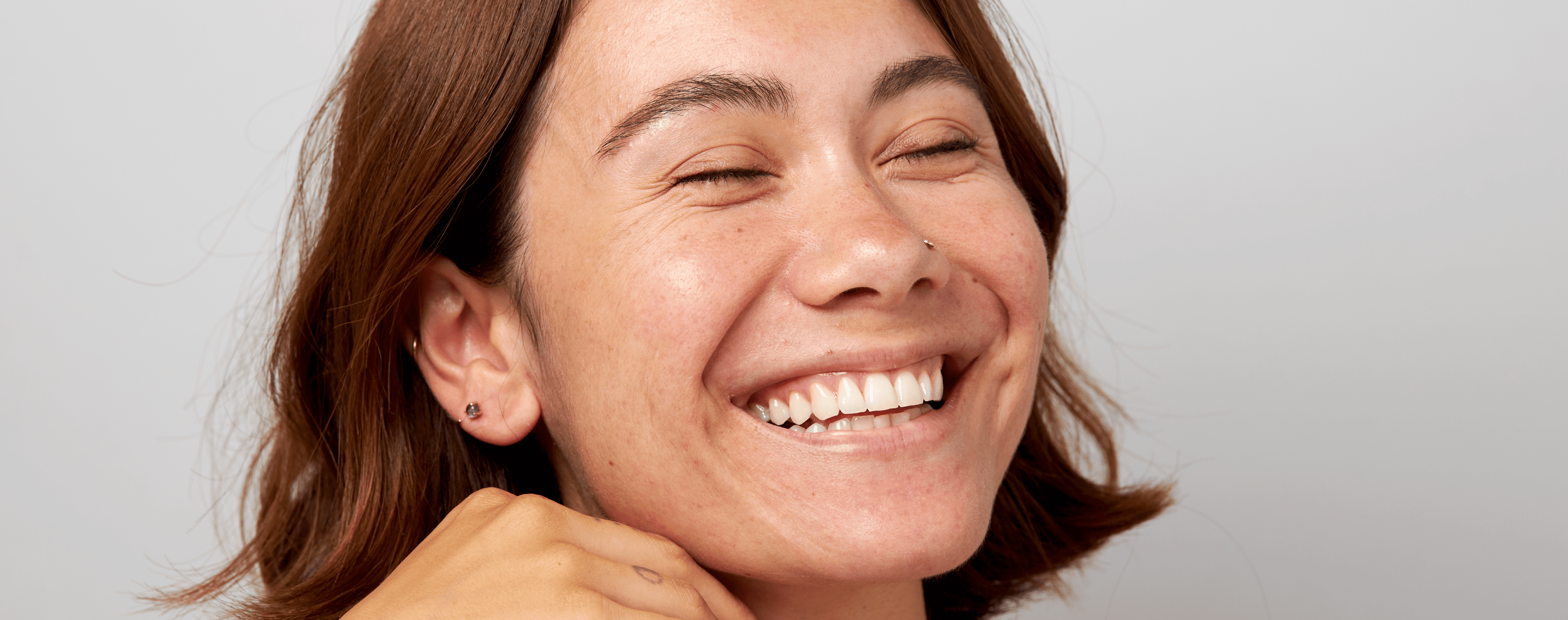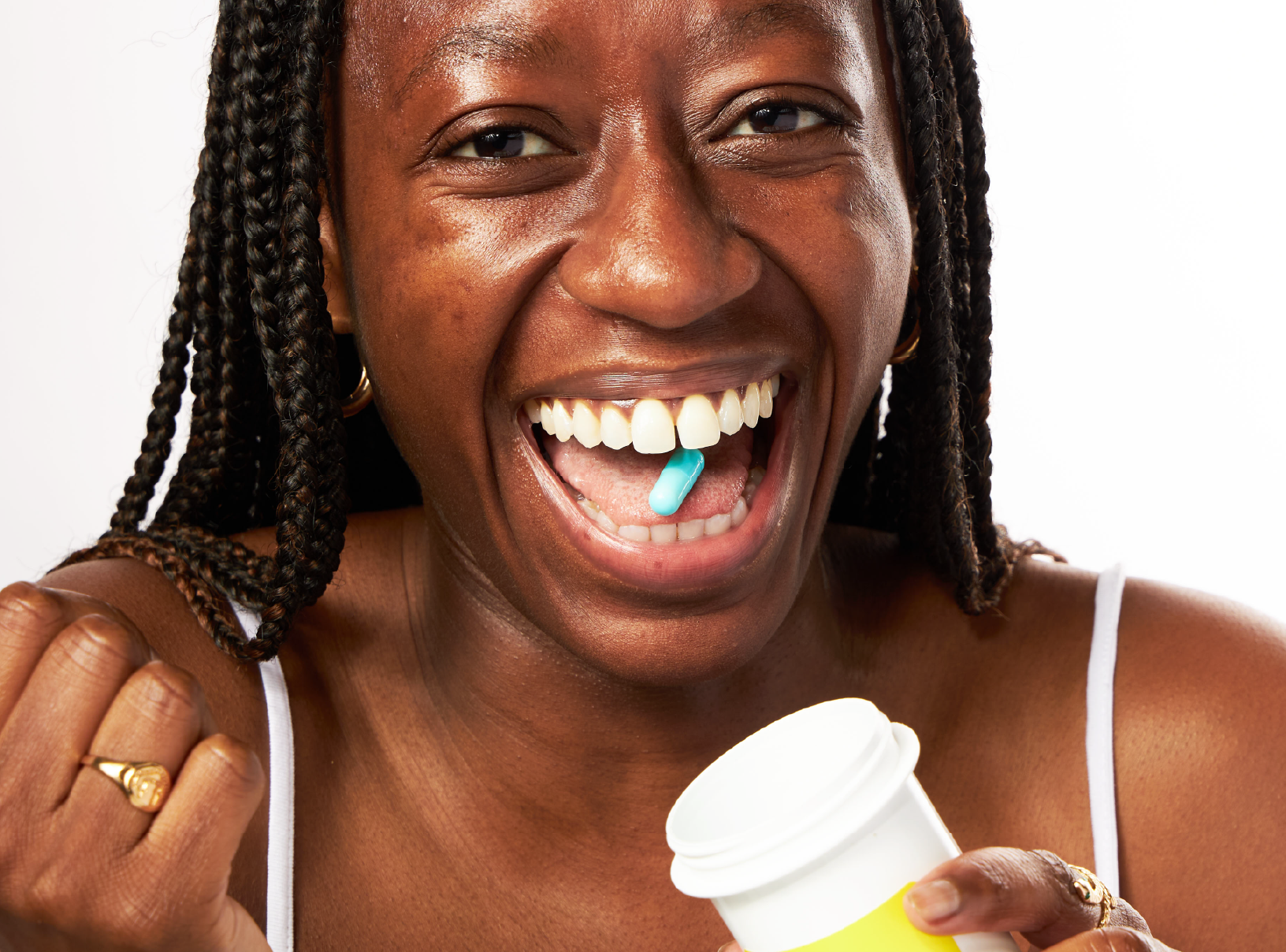Education
How to get rid of big pimples


SHARE
Education
How to get rid of big pimples
Medically reviewed by Kristin Hall, FNP
Written by Apostrophe Team
Last updated 11/3/2024
Waking up with a big pimple can be a day ruiner, even if acne is common. So common, in fact, that 85 percent of 12- to 24-year-olds experience at least some type of minor acne.
But even if most people experience acne, it doesn’t change the fact that you will likely want it gone. So here are some quick dos and don’ts for getting rid of big pimples.
Understanding Your Big Pimple
Before you get rid of your big pimple, you first need to understand what kind of pimple you’re dealing with so you can fight it with the proper acne treatment.
Big pimples could be various types of breakouts, each of which requires different types of acne treatment.
Papules. These are typically small acne lesions, and can typically be treated at home.
Whiteheads and blackheads. This type of acne is pretty common when you have clogged pores. You’ll recognize this acne because as it forms, the head of the pimple is either white or a black dot. These are also typically smaller in size. Depending on the severity, your acne treatment may be simple as an at-home treatment or may require the support and guidance of a dermatology practitioner.
Nodules or cysts. This is more severe acne, as it’s typically large and deep pimples. Nodules can often be painful pimples to experience. A dermatology professional should be consulted to treat nodules and cysts to avoid acne scars.
Depending on the level of acne you have and the severity of the acne you’re experiencing, your treatment plan will vary.
If you’re worried you have cystic acne (sometimes called pervasive acne), you’ll want to check in with a dermatology practitioner.
Cystic acne can be painful, irritating, and cause long-term issues — to your body (like scarring), and your mind (like self-esteem).
However, with a dermatology practitioner’s help, you can find an effective treatment.
Causes of Big Pimples
Acne of any kind is typically brought on by specific risk factors. Unfortunately, those specific risk factors vary greatly — from certain lifestyle choices to hormonal imbalances. Specifically, those causes include:
Puberty
Experiencing acne during your teenage years (adolescence) is quite common, but it’s also likely to get better as you age.
Genetics
Some studies have shown that if your parents had severe acne, it’s more likely that you will experience severe acne.
Diet
Although chocolate or dairy are often culprits of acne, more recent studies show that while diet does play a role in acne, the specifics of what worsens acne are more nuanced.
For example, dairy may influence acne, but specifically, the consumption of milk may worsen some people's acne.
And while low glycemic diets have shown favorable results for some people, they’ve shown mixed results for others.
As far as vegan and keto diets go, the jury is still out, and more research needs to be conducted.
Given that diet does influence your skin, you may want to talk with a dermatology professional about your current diet and what changes — if any — make sense.
Treating Big Pimples at Home
You’re dealing with big pimples, but you’re not necessarily ready to enlist the expertise of a dermatology professional. We get it.
There are tons of effective treatments on the shelf at your local drugstore, and plenty of things you can do (or don’t do) to treat your big pimples from the comfort of your home.
Do Try This
Here are some recommended tips from the American Academy of Dermatology Association for getting rid of big pimples or, at the very least, starting the process.
Wash your skin. Use a mild cleanser and wash your skin before you try treating it. This will help clean away any dirt and bacteria.
Use an ice cube. If you feel a pimple forming on your skin, or if it feels early on in the pimple process (aka as soon as you notice it), you can apply an ice cube to help with irritation and redness. It's recommended to apply it to the skin for 5-10 minutes, then have a 10-minute break, and repeat that twice.
Try an acne spot treatment. You can try an acne spot cream (many derms recommend 2 percent benzoyl peroxide). Just use benzoyl peroxide sparingly, as less is usually more.
Enlist the help of salicylic acid. Using a cleanser that contains salicylic acid has been shown to help clear pores. However, salicylic acid might cause some skin irritation or dry out your skin. If this is the case, you’ll want to switch to a different cleanser.
Apply warmth if you see a whitehead. If you’re beginning to see any pus, apply a warm compress. For example, you can soak a washcloth with warm water and compress the pimple for 10 to 15 minutes, up to three to four times a day.
Don’t Try This
Similarly, the American Dermatology Professional Academy recommends you don’t try these things, as it might make things worse or even lead to acne scarring.
Pop, squeeze, or pick. We know, it’s so tempting! But seriously, trying to pop, squeeze, or pick your acne may make it worse, cause discoloration, or worse, cause scarring.
Apply toothpaste. This is just a myth and does not actually work. In fact, the ingredients in toothpaste may irritate your skin. We recommend avoiding DIY skincare hacks as many can cause more harm than good.
When to Contact a Dermatology Professional
If your acne has persisted or you’re worried, contact a dermatology professional about getting a specific plan and guidance.
A board-certified dermatology professional has extensive knowledge on skin types, level of acne and type, and customizing treatment plans for each patient.
They’ll likely look at each of these factors, as well as your age (if it’s adult acne or pubescent, for example) and the treatment options you’ve used in the past.
They may also suggest the following treatments:
Oral medications. For cystic acne or nodular acne, dermatology professionals may recommend oral antibiotics. Or, for women, they may recommend an additional hormonal therapy (a commonly recommended option is oral spironolactone).
Prescription cream. For more mild acne, such as papules or whiteheads and blackheads, a dermatology professional may prescribe an antibiotic cream to be used in addition to benzoyl peroxide. There are also other topical treatments like tretinoin and azelaic acid that can target your acne at the skin level.
Cortisone injections. For big pimples that are really painful, a dermatology professional might recommend a cortisone injection. This can reduce the pain and size of breakout. Although just note this is typically reserved for the most severe breakouts.
Getting Rid of and Preventing Big Pimples
Want to get rid of your big pimples once and for all? Well, there’s good news and there’s bad news.
The bad news is that adult acne and adolescent acne of any kind are super common and sometimes unavoidable.
But the good news is the treatment options are vast. You have the option to try at-home treatments to quickly get rid of acne.
There are also longer-term life habits you can change to help prevent acne over time. However, if you're feeling frustrated and acne seems persistent, you may want to see a dermatology professional.
So if you're staring at the mirror right now with a big pimple… relax. Don’t pick at it. Try an over-the-counter cream or get connected with a dermatology professional to help you treat it and come up with a plan for next time.
If you’ve been trying to find the right treatment for your acne, get started with Apostrophe today.
Shop this post

Tretinoin
Like what you just read? Sign up for our email list to get the scoop on skincare science delivered straight to your inbox.

Deep Dives
A dermatologist shares his thoughts on the recent studies about benzoyl peroxide and benzene.
Read More
Education
What is milia?
What is milia? Today, we’re jumping into one type of bump that you may have heard about most commonly in infants — milia.
Read More
Education
Best moisturizer for acne-prone skin
If you have combination acne-prone skin, figuring out which moisturizer is best for your skin might be tough. In this guide, we break down the best moisturizer for combination, acne-prone skin.
Read More
